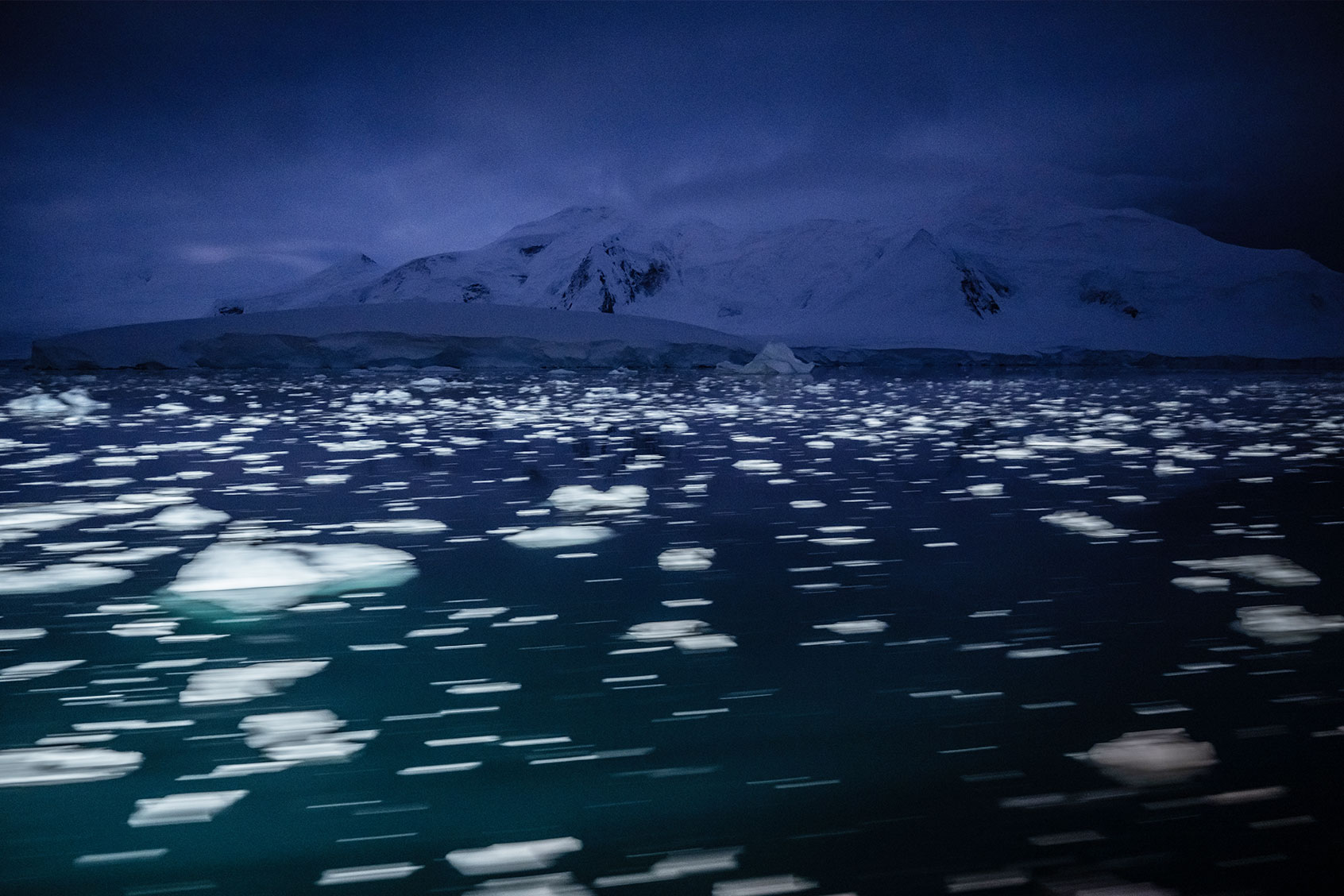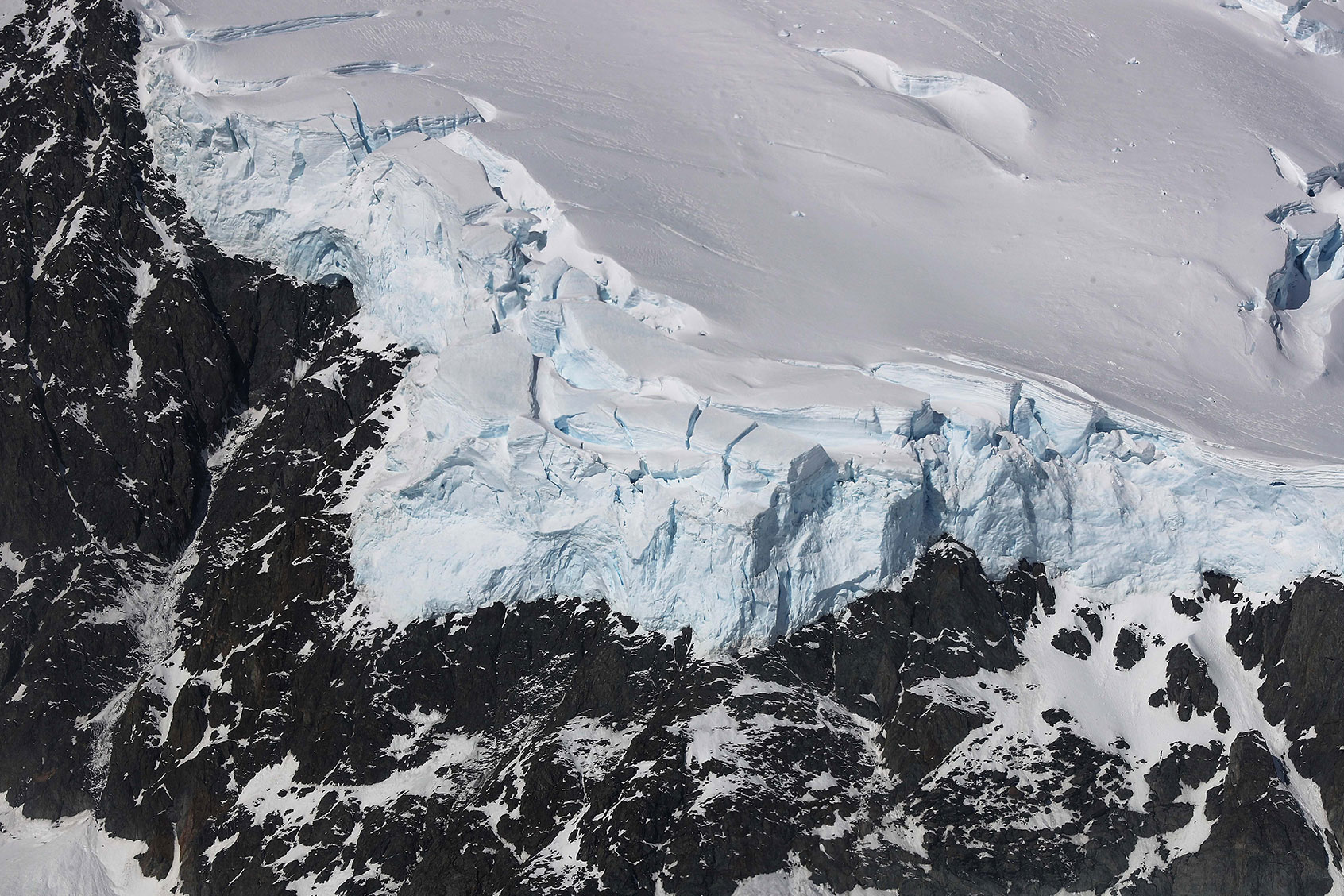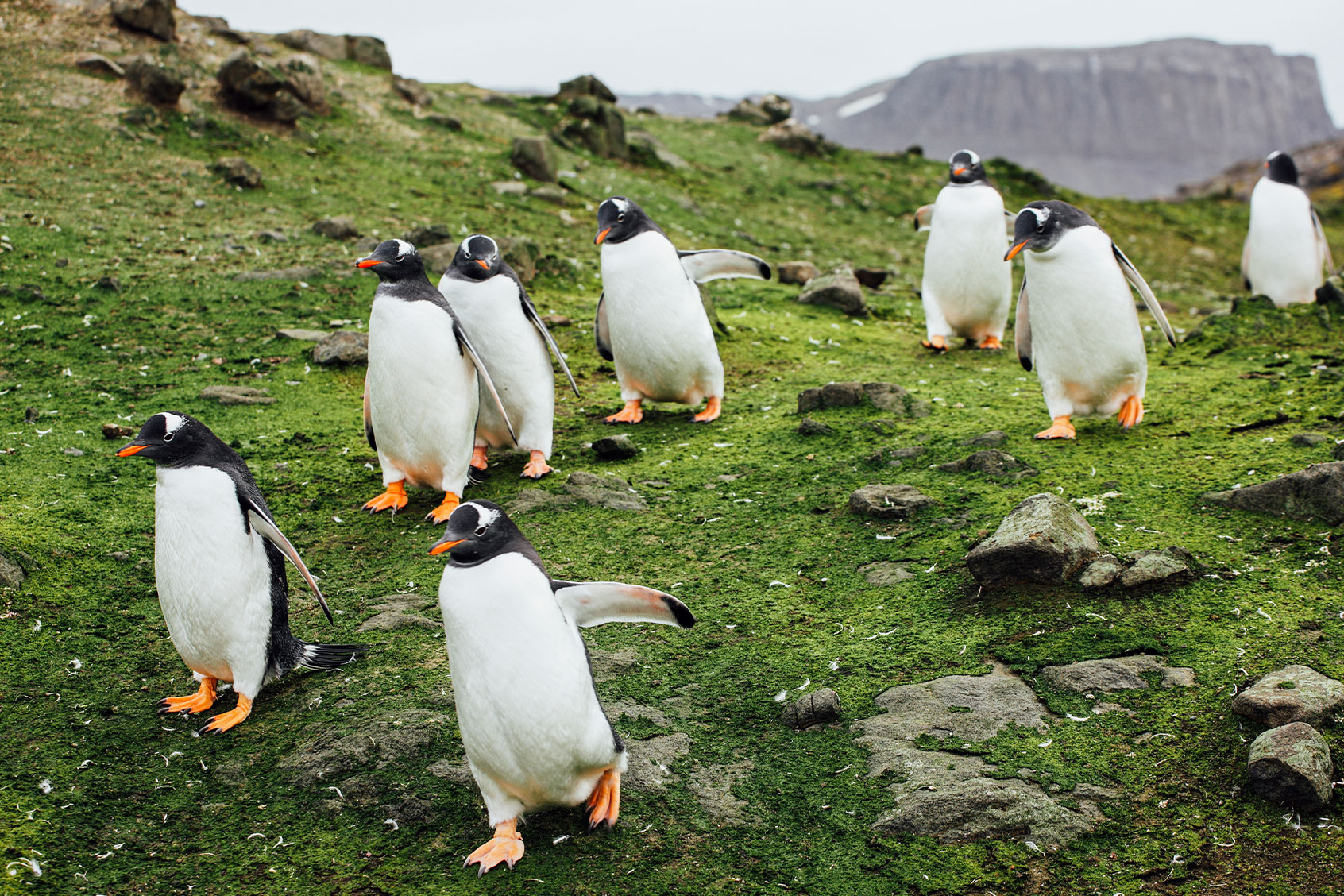The first color that comes to mind when thinking about Antarctica is a stark white, which makes sense, given the southernmost continent is generally buried in ice and snow. It has earned its reputation as “the white continent” thanks to harboring 90% of the world’s ice, concentrated in a 2.2 km (1.4 mi) thick layer.
Yet according to a recent study in the journal Frontiers in Environmental Science, Antarctica’s snow white status may soon be eclipsed by a different color: green.
This shifting dynamic is driven, of course, by climate change. Burning fossil fuels are jacking up the Earth’s average temperature, with this heating occurring at an even higher rate at both poles due to a process known as the ice-albedo effect. For decades Antarctica has reeled from a series of ocean heat waves and ice loss events. By analyzing archival photographs of the entire Antarctic continent taken by the NASA/USGS (United States Geological Survey) Landsat program from 1986 to 2021, the scientists behind the new study found the area of likely vegetation cover increased from 0.863 km2 (0.333 m2) in 1986 to 11.947 km2 (4.613 m2) in 2021.
More ominously, the rate of greening has increased with each passing year. As the authors note, the rate of growth in green on the continent was 0.424 km2 (0.164 m2) per year between 2016 and 2021, a sharp uptick from the broader trend of 0.317 km2 (0.122 m2) per year during the entire study period.
While there has been ample previous research on related phenomena like ice melt and sea ice melt, the scientists behind the new paper bluntly declare that “this trend echoes a wider pattern of greening in cold-climate ecosystems in response to recent warming, suggesting future widespread changes in the Antarctic Peninsula’s terrestrial ecosystems and their long-term functioning.”
 Melting icebergs are seen on Horseshoe Island as Turkish scientists conduct fieldwork on Horseshoe Island within 7th National Antarctic Science Expedition under the coordination of the Scientific and Technological Research Council of Turkiye (TUBITAK) MAM Polar Research Institute with the joint responsibilities of the Turkish Presidency and Turkish Ministry of Industry and Technology in Antarctica, on February 26, 2023. (Sebnem Coskun/Anadolu Agency via Getty Images)Lead author Dr. Tom Roland, a senior lecturer in physical geography at the University of Exeter, explained that the scientists decided to undertake this research after making a single green discovery that unintentionally foreshadowed their ultimate conclusions.
Melting icebergs are seen on Horseshoe Island as Turkish scientists conduct fieldwork on Horseshoe Island within 7th National Antarctic Science Expedition under the coordination of the Scientific and Technological Research Council of Turkiye (TUBITAK) MAM Polar Research Institute with the joint responsibilities of the Turkish Presidency and Turkish Ministry of Industry and Technology in Antarctica, on February 26, 2023. (Sebnem Coskun/Anadolu Agency via Getty Images)Lead author Dr. Tom Roland, a senior lecturer in physical geography at the University of Exeter, explained that the scientists decided to undertake this research after making a single green discovery that unintentionally foreshadowed their ultimate conclusions.
“Our take home message from this study isn’t a particularly happy one,” Roland told Salon, adding that the results “shocked” the scientists. “We had to recheck our numbers several times before we believed it,” Roland said.
"We had to recheck our numbers several times before we believed it."
“Based on previous work we’ve done on the Antarctic Peninsula, using core samples taken from a few sites across the region, we had some idea that the plants there have been growing faster in recent decades,” Roland said. “What we didn’t know was how widespread this increase in plant growth was, and this is why we turned to satellite imagery — it’s the only way to measure changes like this over huge spatial scales.”
Thanks to their paper, the scientists have now demonstrated that there is indeed a widespread greening trend in Antarctica. Our southernmost continent was actually once so green it was covered in rainforests 90 million years ago, at a time when carbon dioxide levels were much higher than today. Indeed, from the larger perspective of Earth’s planetary history, Antarctica was green for a large chunk of time, specifically during the period prior to the Eocene Epoch 56 million years ago.
Yet all of that is, quite literally, ancient history. Scientists do not believe Antarctica would be greening to this extent today if not for human-caused climate change.
Want more health and science stories in your inbox? Subscribe to Salon's weekly newsletter Lab Notes.
“The area of vegetation cover has increased by over ten times in just 35 years and, worryingly, the speed at which this greening is taking place accelerated in the most recent years,” Roland said.
This trend is yet another canary in the coalmine for our ongoing climate crisis, but Roland argued we are “fast running out of canaries” when it comes to reducing our fossil fuel use and greenhouse gas emissions.
“Our findings confirm that the influence of anthropogenic climate change has no limit in its reach,” Roland said. “Even on the Antarctic Peninsula — this most extreme, remote and isolated ‘wilderness’ region — the landscape is changing, and these effects are visible from space.”
We are “fast running out of canaries” when it comes to reducing our fossil fuel use.
This does not mean that Antarctica will transition from white to completely green overnight. In fact, such a scenario is unlikely to occur either in our lifetimes or those of any now-living generations. Despite the recent greening, only 0.12% of Antarctica is actually covered in vegetation, hardly enough to sustain lush forest ecosystems. Additionally Walt Meier — a senior research scientist at the National Snow and Ice Data Center who was not involved in the study — told Salon that he was not surprised to see new vegetation on the Antarctic Peninsula, since that area is the farthest north and has seen the most warming over the past few decades.
"We’ve seen this 'greening' in the Arctic as tundra is getting replaces by shrubs ('shrubification')," Meier said. "I would note that the amount of vegetation observed is still very small – it changes from ~0.9 sq km to ~12 sq km. In terms of percentage increase it is a lot, but 12 sq km is still a very small area – it’s about 20% of the size of the island of Manhattan."
 NASA's Operation IceBridge has been studying how polar ice has evolved over the past nine years and is currently flying a set of nine-hour research flights over West Antarctica to monitor ice loss aboard a retrofitted 1966 Lockheed P-3 aircraft. (Mario Tama/Getty Images)
NASA's Operation IceBridge has been studying how polar ice has evolved over the past nine years and is currently flying a set of nine-hour research flights over West Antarctica to monitor ice loss aboard a retrofitted 1966 Lockheed P-3 aircraft. (Mario Tama/Getty Images)
This means that, at the time of this writing, someone dropped in the middle of Antarctica would almost certainly wind up in a world of white. The bigger problem is that this is "an indication of a warming climate over the peninsula," Meier said. While the increased amount of vegetation absorbs CO2 and is thus a sink for greenhouse gases, Meier added that "it is a very small effect and even including greening of the Arctic it does not come close to compensating for the large negative impacts of human [greenhouse gas] emissions, including the melting of the ice sheets and glaciers in Antarctica that contribute to sea level rise."
We need your help to stay independent
University of Exeter glaciologist Martin Siegert, who was also not involved in the study, told Salon that the study confirms what experts like himself have long predicted — namely, that Antarctica will see an increase in plants on exposed surfaces as it loses ice due to climate change.
“The problem is two-fold: First, that the warming promotes growth, and second that more exposed surfaces are appearing as snow and ice melts,” Siegert said. “It matters for the U.S. because the Antarctic acts as a major heat sink, keeping the whole planet cool. If that stops — i.e. the white reflecting surface is replaced by darker exposed surfaces, heat will be retained rather than reflected, and the planet will warm.”
The increased green, meanwhile, will also prove quite disruptive to the indigenous Antarctic ecosystem.
“If I were to make a prediction, I would envisage a growing fraction of the Peninsula’s landscape becoming dominated by a mosaic ecosystem of mosses, lichens, liverworts and fungi,” Roland said. “Of course, with this increase in plant life, we’re going to see increased soil formation, and the risk of colonization by non-native and potentially invasive species grows considerably as a result. Precisely what the Peninsula will look like in, say, one-hundred years’ time is difficult to say, but we can safely suggest that Antarctica’s environmental future is at risk.”
Read more
about the environment


